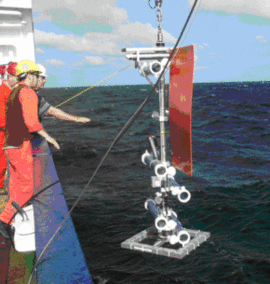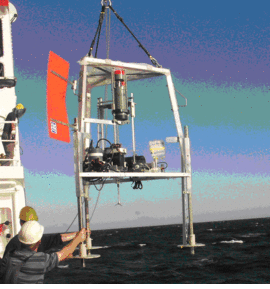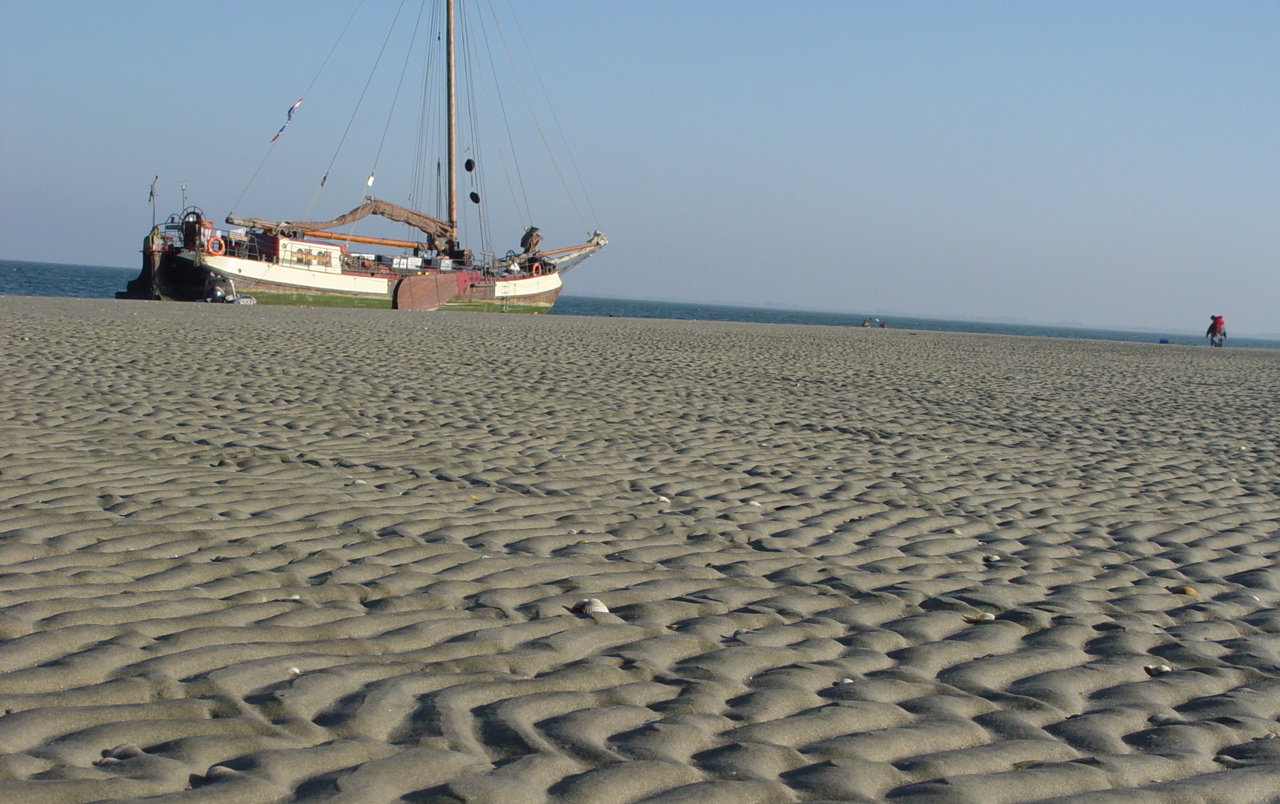Page path:
- Departments
- Department of Biogeochemistry
- Biogeochemistry Group
- Projects
- Nutrient Fluxes Between Marine Sediments and Overlying Waters
Nutrient Fluxes Between Marine Sediments and Overlying Waters
Fluxes in and out of the sediments play a key role in controlling the chemical composition of the Ocean. Hence, sediments are an important aspect of the research within the Nutrient Group.
N-loss from Permeable Sediments
Although the majority of continental margins is covered by coarsed-grained relict sediments, most previous biogeochemical research has focused on muddy or fine-grained sediments, as the importance of advective transport on biogeochemistry in permeable sediments has not been realized until recently. In collaboration with Florida State University (USA) and ICBM (Oldenburg) we investigated N-loss in permeable Wadden Sea sediments under near in situ conditions.
Experiments used multiple approaches: 15N-isotope pairing experiments in modified whole-core incubations, slurry incubations, flow-through stirred retention reactors and microsensor measurements. Our results reported some of the highest potential denitrification rates (≥ 0.19 mmol N m-2 h-1) in the marine environment. Moreover, several lines of evidence showed that denitrification occured at O2 concentrations up to ~90 μM (Gao et al., 2010). We attributed the observed high aerobic denitrification rates to the likely adaptation of denitrifying bacteria to recurrent tidally-induced redox oscillations in permeable sediments. In contrast with conventional views, our results indicated that permeable sediments could play a significant role in the N-removal from shelf environments, which may account for 50-70% of oceanic N-loss. Hence their contribution to the global N-removal should be re-evaluated.
Turbulent diffusive transport in the benthic boundary layer
Exchange processes across the sediment water interface are crucial for the cycling of key elements in aquatic systems. It is commonly assumed that vertical turbulent transport in the benthic boundary layer (BBL) is high and thus not limiting the exchange processes. However, the range of turbulent diffusivities and their relevance for the mass transport are not well described. In collaboration with the University of Koblenz-Landau, we developed a new, simplified approach to measure turbulent diffusivity from statistical analysis of current velocity data. Diffusivity measurements in the BBL of Lake Constance showed that low current velocities and stable density stratification in the BBL decreased the diffusivity down to values that potentially control oxygen flux and conentrations at the sediment surface. The data suggests that turbulent transport in the BBL can be crucial for the development of bottom water hypoxia and sulfide efflux from the sediments. These calculations are to be compared with biogeochemical rate (such as N-loss) measurements from various locations and settings.


